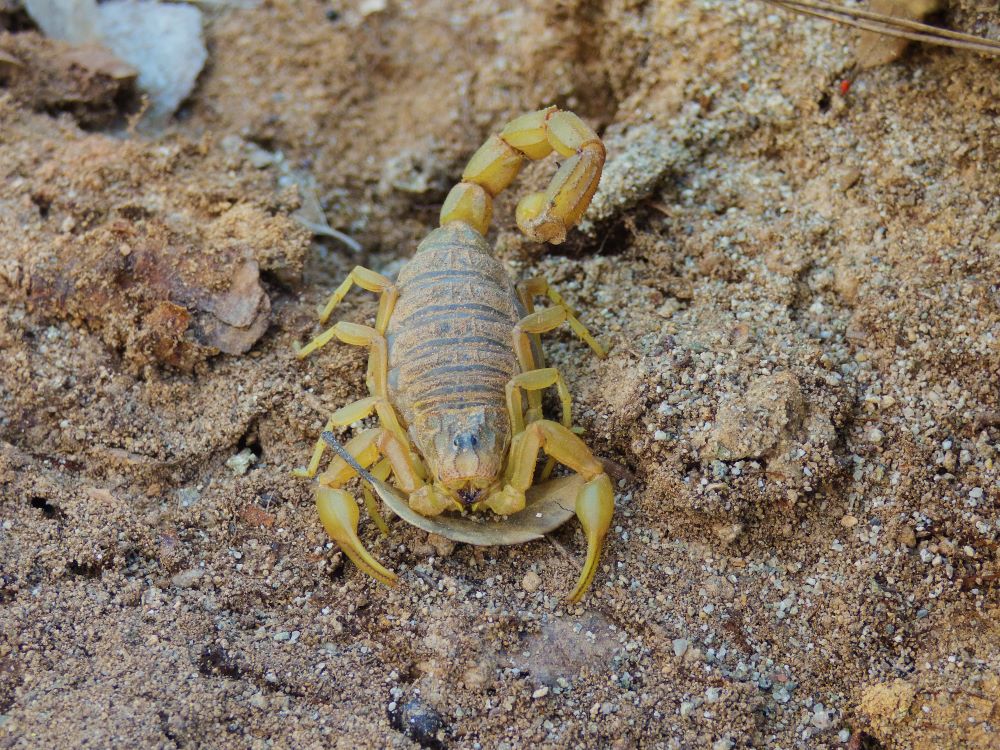The yellow ground scorpion is a member of Arizona’s wide array of stinging pests looking to make their nest in the tight spaces of your home. Commonly found in the Southwestern US and many parts of Mexico, its yellowish hue makes this species stand out amongst its local cousins like the bark scorpion.
Although the sting of the yellow ground scorpion is less intense than that of similar species in the region, it’s still a pest for homeowners in Arizona to look out for. This article includes information about these yellow creepy crawlies, as well as pest control tips and tricks to keep them out of your home.
For high quality scorpion extermination services, Victory Pest Defense is here to help. Reach out today for a free quote!
Understanding The Yellow Ground Scorpion
Dive into the world of the Yellow Ground Scorpion, scientifically known as Vaejovis confusus. As you encounter these Arizona scorpions, you’ll notice their light tan to brownish coloration, a signature trait that has earned them their common name. Here’s a closer look at their defining characteristics:
- These scorpions are typically 2 inches long, with the female scorpions often reaching lengths of 3 inches. Not terribly intimidating!
- The female scorpions have a wider abdomen then the males, appearing wider and swollen in the middle, tapering at the ends. Sometimes this can mean she’s carrying eggs, as yellow ground scorpions typically carry their eggs until they’re ready to hatch.
- Their claws are notable for enlarged bases and narrow ends.
- Tail appendage segments are stout, marked with stripes along the ridges on the top and sides
- These scorpions are “glow in the dark”, meaning that they glow light blue under UV lighting. This can help you find them in the dark if you bring a UV flashlight to the scorpion search.
These interesting scorpions are distinct among their local cousins, but fortunately, their sting is not hazardous to most people.
Health Risks And Prevention
To keep your encounters with the yellow scorpion to a minimum, especially during their active night hours, be vigilant:
- Preventative Measures:
- Always check your shoes and clothing before putting them on.
- Seal entry points into your home, such as cracks and crevices.
- Use Ultraviolet light to spot these Arizona scorpions in your home.
- Wear shoes when outdoors to avoid accidental stings.
- Environmental Control:
- Remove potential hiding spots like rock piles and firewood from around your dwelling.
- Keep your yard tidy by regularly mowing and pruning vegetation.
- Apply residual contact insecticides to areas where scorpions are likely to hide.
- Focus treatments around the perimeter of structures, paying special attention to likely entry points.
- First-Aid and Medical Attention:
- Wash the sting area with soap and water.
- Apply cool compresses to reduce swelling.
- Use acetaminophen for pain relief.
- Seek immediate medical help for severe reactions, such as difficulty breathing or seizures, and for young children.
- If possible, capture the scorpion for identification to assist in treatment decisions, like antivenom for bark scorpion stings.
Conclusion
If these desert dwellers wander too close for comfort, Victory Pest Defense is here to keep your Arizona home free from yellow ground scorpions year-round. Keep your peace of mind and your home clean and give us a call today for a free quote!
